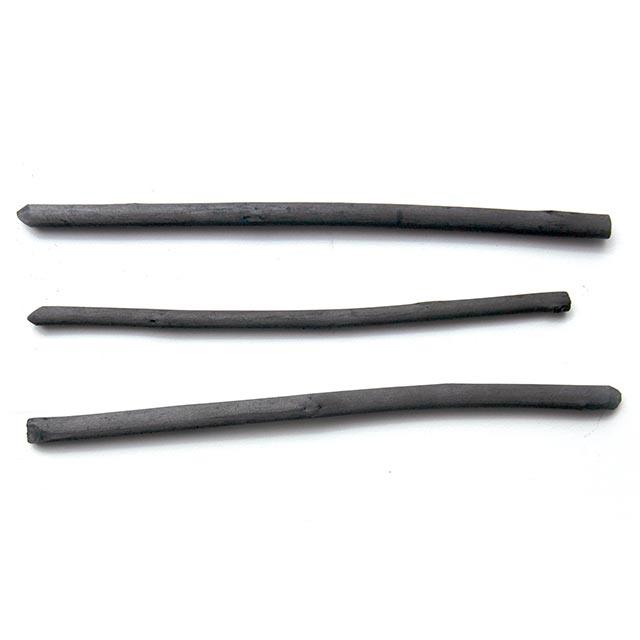Charcoal sticks are made by taking twigs from willow or vine and baking them at high temperatures in an airtight container. They are primitive tools for drawing, and while I’m frustratingly far from mastering the technique, I still find charcoal drawing quite intriguing.
Should you feel like making your own charcoal sticks, you could follow the instructions given by Italian painter and handbook author Cennino d'Andrea Cennini (ca. 1360 – ca. 1425) from his Il Libro dell’Arte. I particularly like the part where he writes you should “go to the baker’s in the evening, after he has stopped work…”:
Take a nice, dry, willow stick; and make some little slips of it the length of the palm of your hand, or, say, four fingers. Then divide these pieces like match sticks; and do them up like a bunch of matches. But first smooth them and sharpen them at each end, like spindles. Then tie them up in bunches this way, in three places to the bunch, that is, in the middle and at each end, with a thin copper or iron wire. Then take a brand-new casserole, and put in enough of them to fill up the casserole. Then get a lid to cover it, [luting it] with clay, so that nothing can evaporate from it in any way. Then go to the baker’s in the evening, after he has stopped work, and put this casserole into the oven; and let it stay there until morning; and see whether these coals are well roasted, and good and black.

Bibliography
- Cennini, Cennino, and Daniel V. Thompson. The Craftsman’s handbook. New York: Dover, 1933.
- Finlay, Victoria. Color: A Natural History of the Palette. New York: Random House, 2004.
